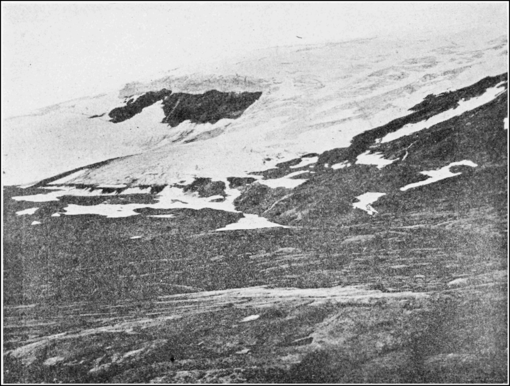Fig. 2. Norwegian Uplands in Summer. Snow field near Djupvashütten. "In many places the snow has not disappeared by the end of summer, and thus furnishes a continual supply of water."
themselves in rude huts along the shore, and when the fish arrive they • are notified by telephone. A season's catch is often valued at nearly $2,000,000. The fish are brought on shore and dried; the heads and backbones are ground for fertilizer, or boiled with hay for cattle food; the livers are tried for cod-liver oil. This fishing, like that of the Newfoundland Banks, is attended with great loss of life. Brought up in such a school, it is not surprising that so many Norwegians are sailors and that Norway ranks next to England and the United States in maritime commerce, nor that Norwegian masters command vessels in all parts of the world, from the whalers of Japan to the fruiters on our own east coast. In addition to the cod fisheries, the herring fisheries occupy many men, while a smaller number fish for salmon, salmon trout, and market sea-fish, as well as lobsters.
The third great industry of Norway is that connected with timber. While the highlands are barren, the lower slopes, even far to the north, are densely wooded. The most important woods are pine and spruce, and in the more northern portions birch is abundant, indeed far beyond the line of conifers the white birch continues, until it becomes at last so stunted that it is hardly more than a bush, and we are above the tree-line. The fashion of building houses is evidence of the wealth of timber. In the north all houses are built of logs, hewn smooth on two sides and hollowed on the lower side to fit the unhewn, rounded top, thus avoiding a crack. At the corners and where the partitions meet the walls, the logs are carefully dovetailed together, so that the

